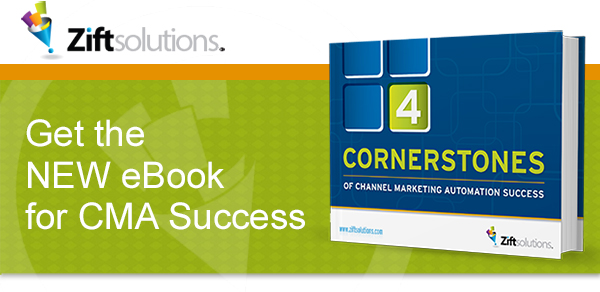Zift’s latest eBook uncovers The 4 Cornerstones of Channel Marketing Success. In this Channel Chatter series, we’ll provide a glimpse into the eBook, which details a direct path for capturing and capitalizing on the promised benefits of Channel Marketing Automation. If you missed the series intro, you can read it here or move forward with Cornerstone #2 below.
Developing a Partner Engagement Plan: No “One-Size-Fits-All”
There is no “one size-fits-all” model for partner engagement. However, organizations that take the time to develop a partner engagement plan before they move forward with Channel Marketing Automation have much higher rates of success.
The key to developing a strong partner engagement plans is to align your overall CMA vision and strategy with the realities of your partner community. To do so, you must evaluate the strength of your current partner relationships along with the available resources and marketing maturity of partners themselves.
Each and every partner community is unique and thus requires different engagement plans. Partners already reselling through large multi-million or billion-dollar enterprises will likely have well-established marketing practices and significant resources in place. Their needs and expectations will differ vastly from those of a small mom-and-pop shop with limited resources.
Evaluating Your Partners
The first step in developing a partner engagement plan is understanding and segmenting your partners. Most organizations can divide their partner community into three segments:
- Beginners and Sole-Providers: These partners typically have limited resources and will need more support to develop and execute on CMA successfully. They may rely entirely on their supplier to build and execute a marketing plan.
- Gold Status Partners: These partners are still developing and often lack the resources or training to execute CMA successfully. They will require a support plan and clear communication regarding the benefits and capabilities of CMA to use new tools to their full capacity.
- Top-Tier Partners: These partners generally are large enough to have a marketing staff and available resources to support an array of CMA applications provided by their suppliers. They require minimal support and often achieve the highest rates of success from CMA.
Time for the Tough Questions
Once you’ve segmented your partners, it’s time to ask yourself some tough questions:
- How do you engage with partners today? Understanding your current engagement level, be it high-touch or hands-off, is essential before moving forward with CMA. Organizations with strong ties to their partner communities typically see higher partner adoption rates and stronger outcomes with CMA.
- Do your partners understand the value of marketing? This will help determine their marketing maturity level and whether or not you may need additional support to show partners exactly how to use the CMA tools you intend to provide to be more effective marketers.
- What resources do your partners have on hand? Ask yourself what types of resources are required to support your marketing plan – and if your partners actually have the resources they need to do so internally. If not, you’ll need to provide additional support.
By segmenting your partners and asking yourself direct questions about your current engagement level along with their marketing maturity and on-hand resources, you and your partners will be much better positioned to proceed and succeed with CMA.
Learn more about developing your partner engagement plan and all 4 Cornerstones of Channel Marketing Success by downloading the complete eBook here:






